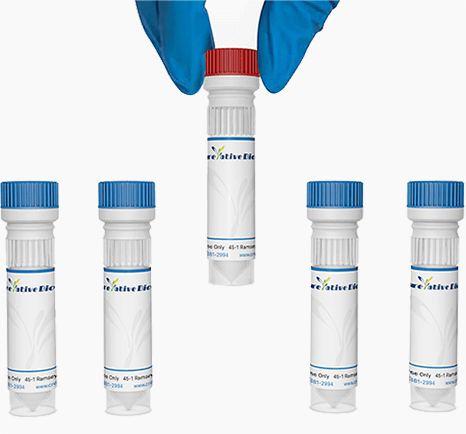Key Details
| Catalog | MAS-0124-YJ6 |
| Applications | FC; IHC |
| Host | Mouse |
| Reactivity | A. castellanii |
| Clonality | Monoclonal |
| Conjugations | Conjugation could be customized |
Overview
Properties
Target
Overview
| Description | NFD1, NFD2, UBD1 and UBD2 are mouse IgG antibodies that recognize A. castellanii. These mAbs bind to AC112 cysts and do not bind to trophozoites. NFD1, NFD2 and UBD1 have cross-reactivity of Acanthamoeba castellanii (AC021), Acanthamoeba polyphaga (AC019), Acanthamoeba polyphaga (AC010), Acanthamoeba lenticulata (AC230) (NFD2 weak), Acanthamoeba culbertsoni (AC001). UBD2 does not bind to Acanthamoeba lenticulata (AC230) and weakly bind to Acanthamoeba polyphaga (AC019) and Acanthamoeba polyphaga (AC010). They do not bind to Acanthamoeba tubiashi (AC064). |
| Reactivity | A. castellanii |
| Applications | FC; IHC |
| Host | Mouse |
| Immunogen |
NFD1, NFD2: Acanthamoeba castellanii strain 112 (AC112) Live trophozoites, cysts; UBD1: Sonicated trophozoites; UBD2: Formalin-fixed trophozoites. |
| Isotype |
NFD1, NFD2: IgG2a kappa UBD1, UBD2: IgG1 kappa |
| Clonality | Monoclonal |
| Clone | NFD1; NFD2; UBD1; UBD2 |
Properties
| Expression Host | HEK293F/CHO |
| Conjugations | Conjugation could be customized |
| Purification | Protein A/G affinity purified is the regular method |
| Purity | SDS-PAGE> 95% |
| Endotoxin Level | Endotoxin level could be customized |
| Form | Liquid (frequently-used) or lyophilized |
| Concentration | About 1mg/ml. There are differences between batches. Special concentration could be customized. |
| Sterility | 0.2 μM filtered |
| Buffer | See the Datasheet |
| Storage | See the Datasheet |
Target
| Target | A. castellanii cysts |
| Alternative Names | Acanthamoeba castellanii; A. castellanii; cysts; Acanthamoeba |
| Introduction | A. castellanii can be found at high densities in various soil ecosystems. It preys on bacteria, but also fungi and other protozoa. This species is able to lyse bacteria and produce a wide range of enzymes, such as cellulases or chitinases, and probably contributes to the breakdown of organic matter in soil, contributing to the microbial loop. |
| Organism | Protozoa |
| Related Disease | Keratitis and granulomatous amoebic encephalitis (GAE) |
| Infections Route | Open wound |
Online Inquiry
